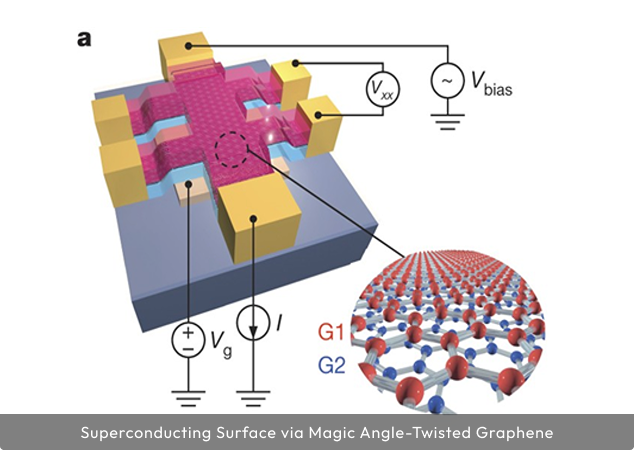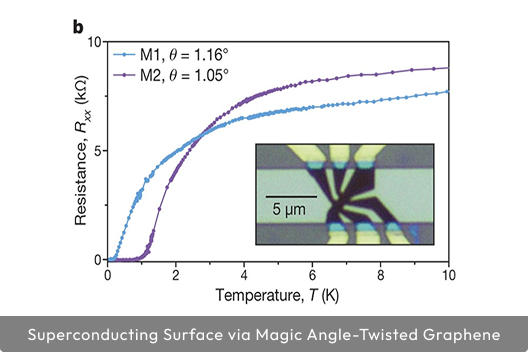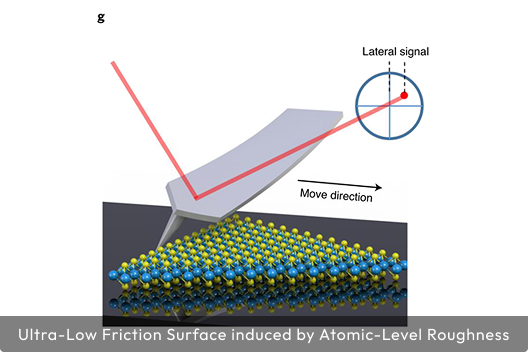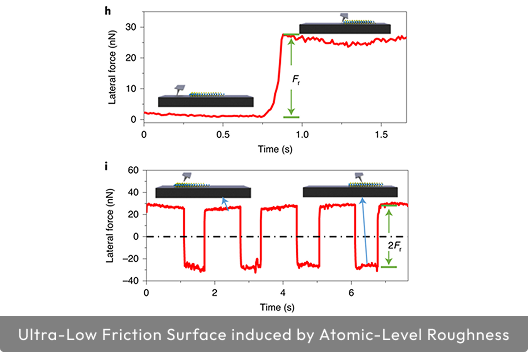
Research 02
Development of
Innovative Nanodevices
- Nanoelectronics
- Proton-exchange membrane fuel cell (PEMFCs)
- Nanobiosensor
- Nanosurface
- Nano-tribology
Challenges and Opportunities in Developing Next-Generation Nanodevices
Building on the ultimate surface modification technologies created by nanomaterials, we aim to challenge the development of next-generation nanodevices. In particular, by freely adjusting the properties of van der Waals heterostructures, we aim to realize new functionalities that go beyond conventional device designs. By leveraging van der Waals forces between layers and optimizing electronic transport and optical response properties through control of stacking angles and interfaces, we will unlock unprecedented device performance. Through these studies, we will promote applications in next-generation semiconductor devices, ultra-low power transistors, high-sensitivity sensors, and quantum devices, enabling energy control and information processing at the nanoscale, and paving the way for a new paradigm in nanotechnology
Point
Applications of
van der Waals
Heterostructure (vdWH)
By applying van der Waals heterostructures formed by freely combining nanomaterials from different dimensions, we aim to develop innovative nanodevices and nanotribological systems
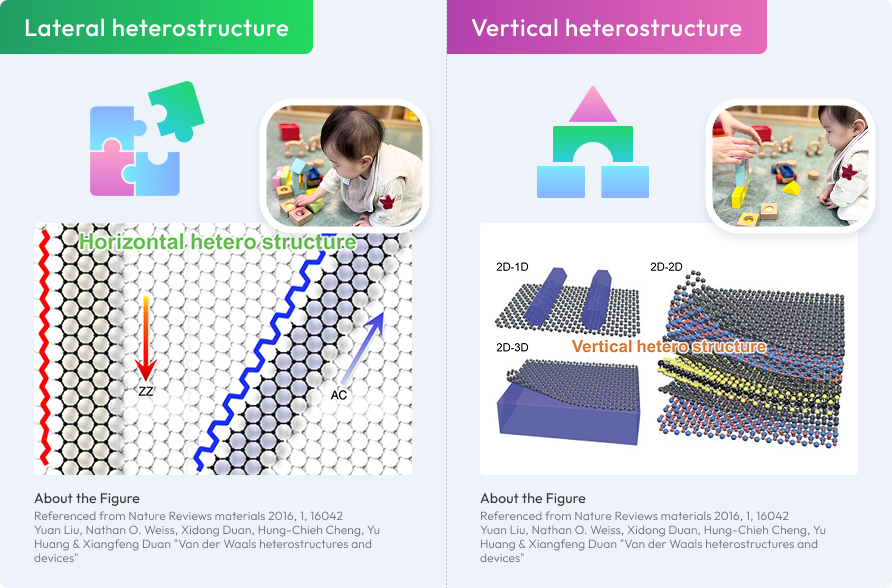

Development of Innovative Nanodevices and
Nanotribological Systems
-
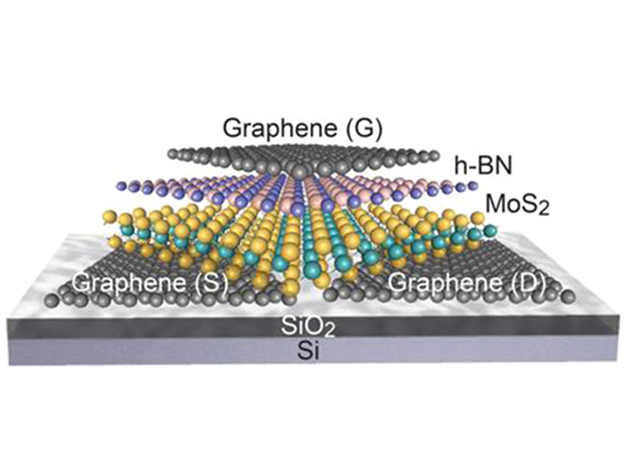
(01)
Ultra-high-speed transistor
By utilizing the vdWH structure of graphene and hBN, we aim to develop ultra-fast, high-performance transistors with an electron mobility approximately 1000 times higher than that of conventional silicon-based FETs.
- About the Figure
-
Referenced from ACS Nano 2014, 8, 6, 6259-6264
Tania Roy, Mahmut Tosun, Jeong Seuk Kang, Angada B. Sachid, Sujay B. Desai, Mark Hettick, Chenming C. Hu, Ali Javey
"Field-Effect Transistors Built from All Two-Dimensional Material Components"
-
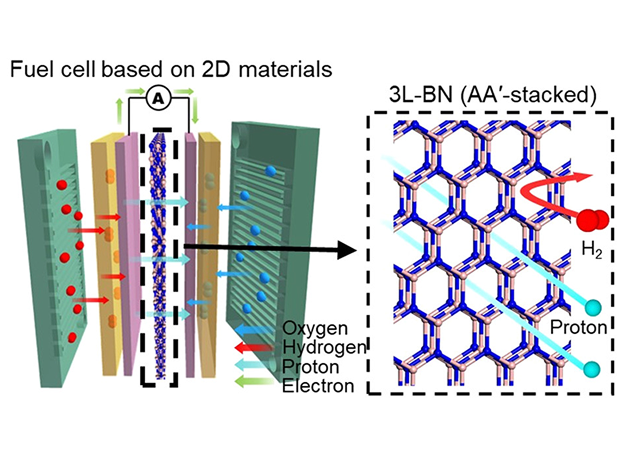
(02)
Proton exchange membrane
Fuel cells are positioned as key devices in energy strategies aimed at achieving a decarbonized society. hBN nanosheets, which possess high proton conductivity, gas barrier properties, thermal stability, and chemical stability, are optimal as proton exchange membranes in solid polymer fuel cells, and have the potential to significantly improve fuel cell efficiency
- About the Figure
-
Referenced from ACS Nano 2018, 12, 11, 10764-10771
Seong In Yoon, Dong-Jun Seo, Gwangwoo Kim, Minsu Kim, Chi-Young Jung, Young-Gi Yoon, Sang Hoon Joo, Tae-Young Kim and Hyeon Suk Shin
"Nanopores in Graphene and Other 2D Materials: A Decade's Journey toward Sequencing"
-
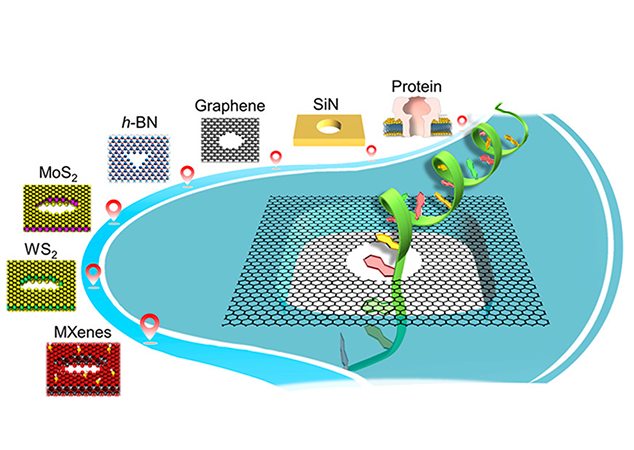
(03)
Nanopore technology
Nanopore sequencing is a molecular biological technique that determines the nucleotide sequence by analyzing the changes in current that occur as DNA or other biomolecules pass through nanopores. This research aims to enable single-molecule sequencing and high-speed real-time data acquisition by creating and applying pores on nanostructured surfaces, bringing a revolution to molecular biology and medicine, including genome research and diagnostic technologies.
- About the Figure
-
Referenced from ACS Nano 2021, 15, 12, 18848-18864
Hu Qiu, Wanqi Zhou and Wanlin Guo "Nanopores in Graphene and Other 2D Materials: A Decade's Journey toward Sequencing"
-
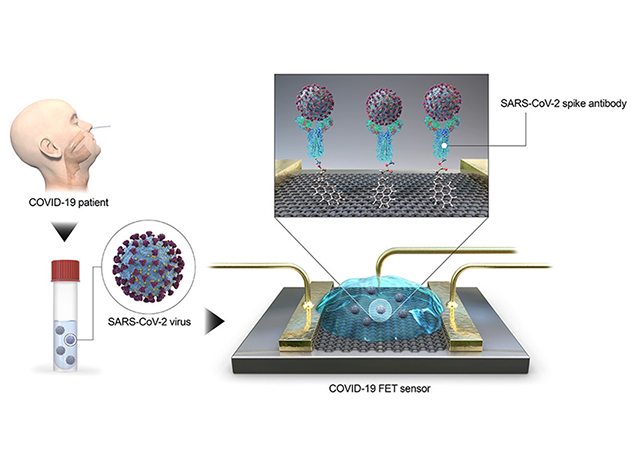
(04)
Highly sensitive biosensing device
Van der Waals heterostructures (vdWH), including graphene, possess excellent electronic and optical properties as well as high sensitivity for molecular detection, making them promising for applications in biosensing devices. Through surface control at the nanoscale, the interaction with biomolecules can be optimized, enabling ultra-high sensitivity detection
- About the Figure
-
Referenced from ACS Nano 2020, 14, 4, 5135-5142
Giwan Seo, Geonhee Lee, Mi Jeong Kim, Seung-Hwa Baek, Minsuk Choi, Keun Bon Ku, Chang-Seop Lee, Sangmi Jun, Daeui Park, Hong Gi Kim, Seong-Jun Kim, Jeong-O Lee, Bum Tae Kim, Edmond Changkyun Park and Seung || Kim
"Rapid Detection of COVID-19 Causative Virus (SARS-CoV-2) in Human Nasopharyngeal Swab Specimens Using Field-Effect Transistor-Based Biosensor"
-
(05)
Controlled functional surface
Surface modification technologies utilizing van der Waals heterostructures (vdWH) enable the creation of functional surfaces that are flat and precisely controlled at the atomic level. By achieving the ultimate surface with high electron mobility, wide bandgap properties, corrosion resistance, superconductivity, and superlubricity, we will accelerate the development of next-generation nanodevices and highly durable materials.
- About the 1st & 2nd Figure
-
Referenced from Nature 2018, 556, 43-50
Yuan Cao, Valla Fatemi, Shiang Fang, Kenji Watanabe, Takashi Taniguchi, Efthimios Kaxiras and Pablo Jarillo-Herrero
"Unconventional superconductivity in magic-angle graphene superlattices"
- About the 3rd & 4th Figure
-
Referenced from Nature materials 2021, 21, 47-53
Mengzhou Liao, Paolo Nicolini, Luojun Du, Jiahao Yuan, Shuopei Wang, Hua Yu, Jian Tang, Peng Cheng, Kenji Watanabe, Takashi Taniguchi, Lin
Gu, Victor E. P. Claerbout, Andrea Silva, Denis Kramer, Tomas Polcar, Rong Yang, Dongxia Shi & Guangyu Zhang
"Ultra-low friction and edge-pinning effect in large-lattice-mismatch van der Waals heterostructures"




We provide information about the activities of our laboratory and recruitment opportunities for students.
If you are interested, please feel free to take a look.
